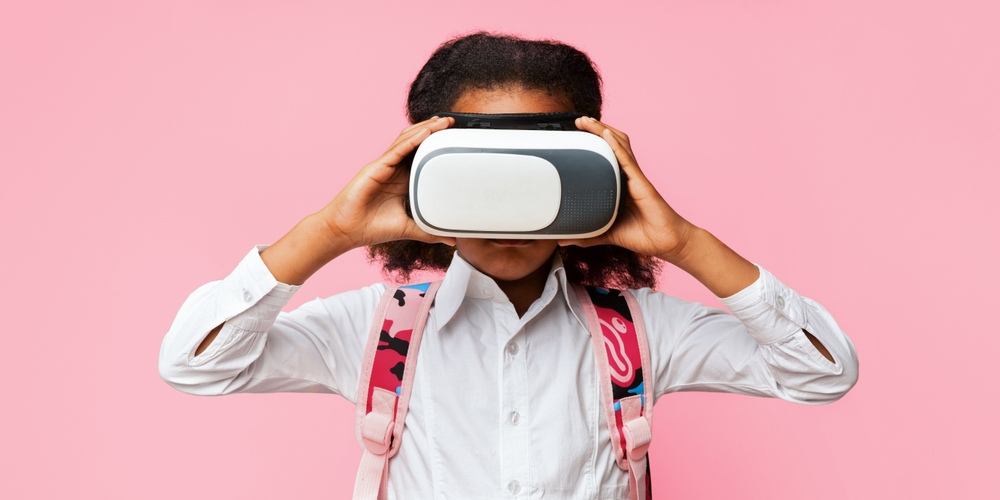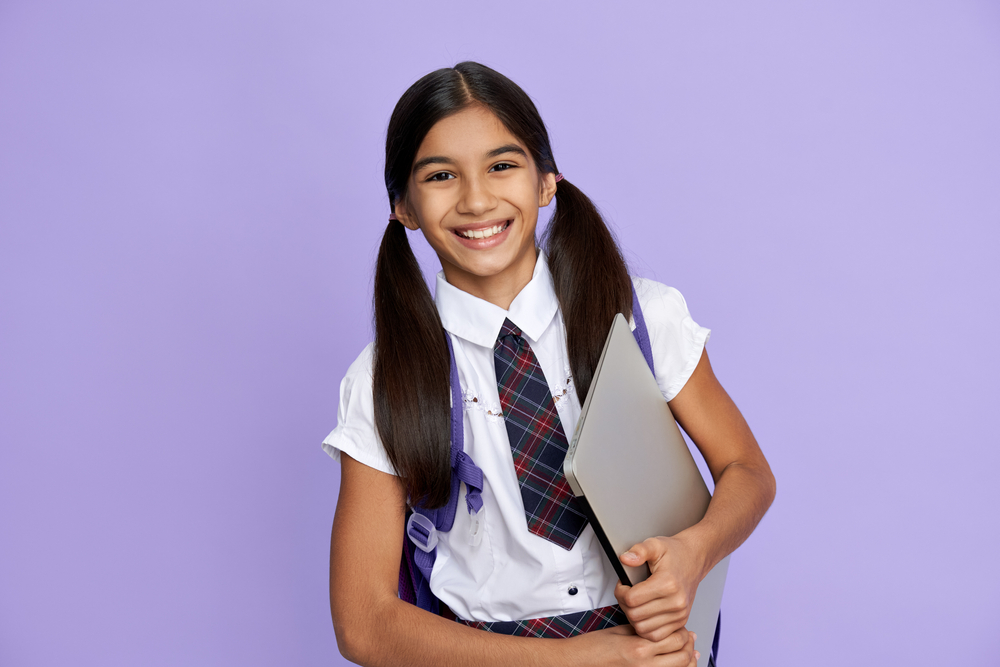
Mixed reality is growing to become ever-important in the digital world we live in, and it can be incorporated into education seamlessly – but what is mixed reality learning, and what does it entail? With our range of state-of-the-art academic facilities and use of technology, we are proud to adapt to the digital age and keep up with the evolving society, and what is important in it
At the School of Modern Skills, we aim to arm our students with the incredible knowledge that will make them succeed in all walks of life. We give our students the tools they need to thrive and learn about the world around them, with a strong focus on digital literacy so that our students can be future innovators, problem solvers, and leaders in the digital age.
What is Mixed Reality?
In simple terms, mixed reality is the combination of physical and digital. Users – in our case, children and teachers – can immerse themselves in 3D spaces through digital technology, computers, and humans, all thanks to graphical processing, display technologies, cloud computing, input systems, and computer vision.
This incredible creation allows us to blend our “real” environments with digital realities and experiences to make learning more engaging, where you can interact and participate with your newfound environment.
Mixed reality is able to develop in two unique ways, which can both be used in education to further our knowledge and skills: virtual reality and augmented reality.
Virtual Reality vs Augmented Reality
Virtual reality can be an excellent learning tool for children with ADHD, but is also useful for any child. In VR, the “real” environment is substituted for the technology environment – whether this is in the form of games, videos, or something else. For this, the user has to be wearing an immersive VR device.
An example of this is the Samsung HMD Odyssey+, which has an opaque virtual display where you cannot see your surrounding environment.
Augmented reality, on the other hand, is an incredible integration between our environments and virtual elements. This can vary greatly depending on the type of device used and what kind of technology it has.
An example of this would be the HoloLens from Microsoft, which has a see-through display and the user is able to see the physical environment around them with virtual elements over the top.
What is Mixed Reality Learning?

Mixed reality can have many different forms within learning and education, and they have their own place. The two primary ways that it can be used in education are traditional mixed reality learning defined as virtual reality, and the second is true mixed reality – where the experience is fully immersive rather than taking place on a computer.
In mixed reality learning, our students are able to manipulate and touch the virtual environment to interact with abstract concepts, data sets, and even formulae that we find complex – all in order to get a better understanding of it.
This “true” mixed reality learning makes education more fun and immersive, and gives students the opportunity to learn live never before. For example, seeing DNA strands up close and personal in VR, identifying elements, and many other things.
How Can Mixed Reality be Implemented into Schools and Learning?
Mixed reality can easily be implemented into schools and classrooms through the use of all the right technology, and a lot of excitement. We can use this advanced technology to teach all kinds of subjects and help our students gain a better understanding of the world around them.
Some subjects that we can use mixed reality learning for include:
- Astronomy
- Geology
- Biology
- Social Studies
- Arts
- History
Key Features of Mixed Reality Learning
There are several key features of mixed reality learning, with the most important being that it can easily blend your environment with virtual environments in order to create a blended reality. Doing this, you can see videos, pictures, and sounds, as well as 3D models and more.
The primary features of mixed learning reality are as follows:
- Information and feedback is given in real-time
- It enhances our perception by overlaying the real world with digital information
- You are able to interact with virtual objects via the use of gestures, handheld devices, or even your voice
- It creates immersive experiences where real and virtual elements seamlessly co-exist
Examples of Mixed Reality Learning
Around the world, mixed reality learning is already being used in education for a variety of subjects, from learning about space and rivers to career exploration and fitness. Below are some incredible uses that you should know about:
- Elements 4D for STEM education
- Google Expeditions for virtual field trips
- Microsoft HoloLens and HoloAnatomy for medical training
- Wonderbook for interactive storytelling
- Tilt Brush by Google for art and design
- HoloFit for physical education
- MondlyAR for learning languages
- Titans of Space for space exploration and astronomy
- TimeLooper for historical re-enactments
- VIVE Sync for exploring different careers
The use of mixed reality learning allows students to explore things that would otherwise be impossible. It offers the opportunity for learning to be completely immersive and extraordinary, like witnessing historical re-enactments or using hologram technology for science and medicine.
Dubai schools are utilising virtual reality and mixed reality learning in the most incredible ways, but this always needs to be done safely. While virtual reality is safe for children, it must be used responsibly and for a limited time – because we need to stay grounded in the real world as well.
Is Mixed Reality Beneficial for Learning?
Mixed reality learning can be incredibly beneficial for schools and students for many reasons. The only downside to this type of learning can be associated costs, since this kind of technology is expensive. However, the results more than make up for the price, with improved education and experiences being at the forefront of mixed reality learning.
Some benefits of mixed reality learning include:
- Versatile use – mixed reality allows both students and teachers to plan and experience new worlds. Things like budgets and safety can be an issue of that past with the right technology, and opportunities to explore the world becomes unlimited without all the traditional hurdles in the way.
- Incredibly engaging – most children will learn better when they can visualise what they are being taught, and mixed reality learning is the perfect opportunity for this.
- Unlimited opportunities – mixed reality learning can be integrated into teaching any kind of subject, allowing students to understand abstract and difficult topics better through the use of inversive technology.
- Visit the past – through mixed reality learning, students can traverse the jungles and see dinosaurs and other prehistoric things that they would never get to experience otherwise.
- Universal – when mixed reality is used in schools, everyone from any background has the opportunity to learn and interact with others, whether it’s in the same classroom or across the globe.
School of Modern Skills

At the School of Modern Skills, there are various facilities available to get the best academic results and teach our students what they need to thrive in the world. With classes on robotics – something that could be the future of education – we blend technology into everything we do.
You can find out more about our school by looking at our academic facilities, medical care, and health and safety. We also have information on parent inquiry procedures, school calendars and hours, transportation, sports, and our vision.
What is mixed reality learning? Mixed reality learning is a key aspect of education where the real and virtual worlds are blended to create a new experience, and it opens a world of new possibilities that we should all be excited for.
Continue reading:
